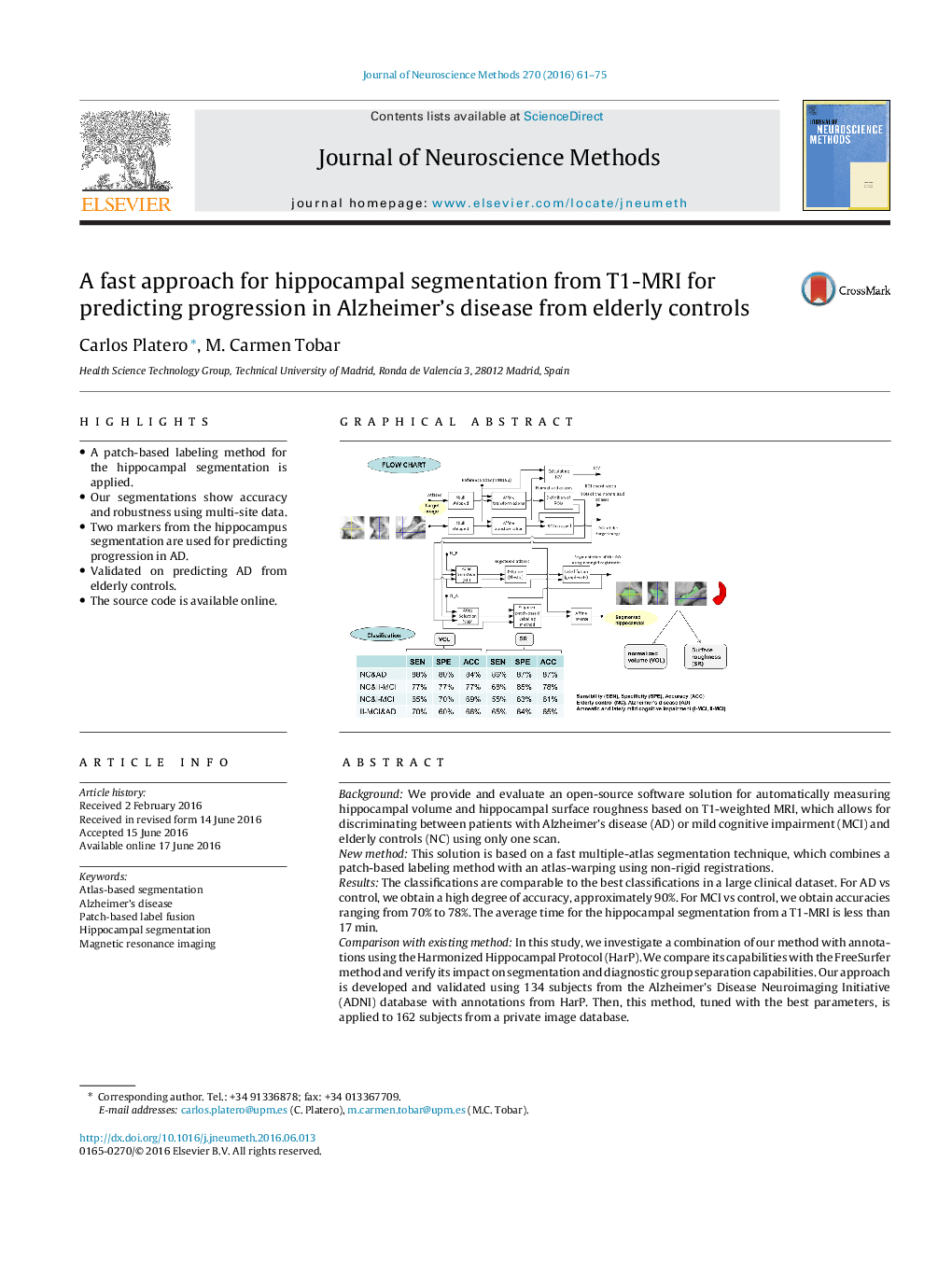| Article ID | Journal | Published Year | Pages | File Type |
|---|---|---|---|---|
| 6267571 | Journal of Neuroscience Methods | 2016 | 15 Pages |
â¢A patch-based labeling method for the hippocampal segmentation is applied.â¢Our segmentations show accuracy and robustness using multi-site data.â¢Two markers from the hippocampus segmentation are used for predicting progression in AD.â¢Validated on predicting AD from elderly controls.â¢The source code is available online.
BackgroundWe provide and evaluate an open-source software solution for automatically measuring hippocampal volume and hippocampal surface roughness based on T1-weighted MRI, which allows for discriminating between patients with Alzheimer's disease (AD) or mild cognitive impairment (MCI) and elderly controls (NC) using only one scan.New methodThis solution is based on a fast multiple-atlas segmentation technique, which combines a patch-based labeling method with an atlas-warping using non-rigid registrations.ResultsThe classifications are comparable to the best classifications in a large clinical dataset. For AD vs control, we obtain a high degree of accuracy, approximately 90%. For MCI vs control, we obtain accuracies ranging from 70% to 78%. The average time for the hippocampal segmentation from a T1-MRI is less than 17Â min.Comparison with existing methodIn this study, we investigate a combination of our method with annotations using the Harmonized Hippocampal Protocol (HarP). We compare its capabilities with the FreeSurfer method and verify its impact on segmentation and diagnostic group separation capabilities. Our approach is developed and validated using 134 subjects from the Alzheimer's Disease Neuroimaging Initiative (ADNI) database with annotations from HarP. Then, this method, tuned with the best parameters, is applied to 162 subjects from a private image database.ConclusionsOur approach with HarP annotations has a high level of accuracy for segmentation of the hippocampus and is robust to multi-site data. The bio-markers extracted from our proposed method have discriminative power based on a scalar feature, showing robustness in generalization and avoid overfitting. The computational time in our hippocampal segmentation algorithm has decreased considerably compared to other available analysis.
Graphical abstractDownload high-res image (190KB)Download full-size image
